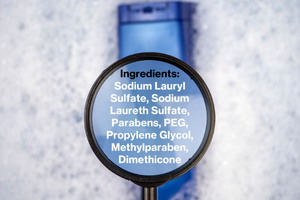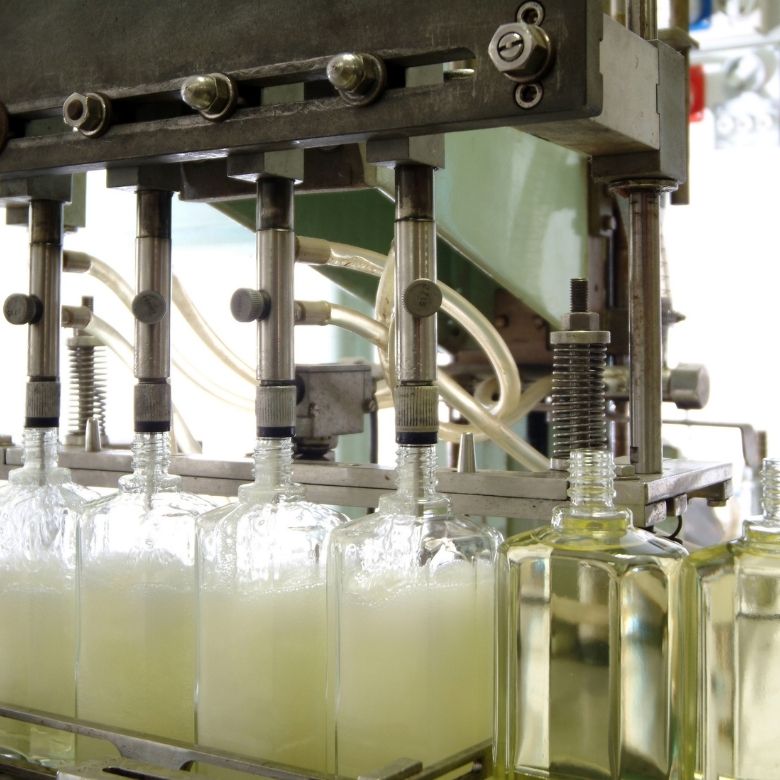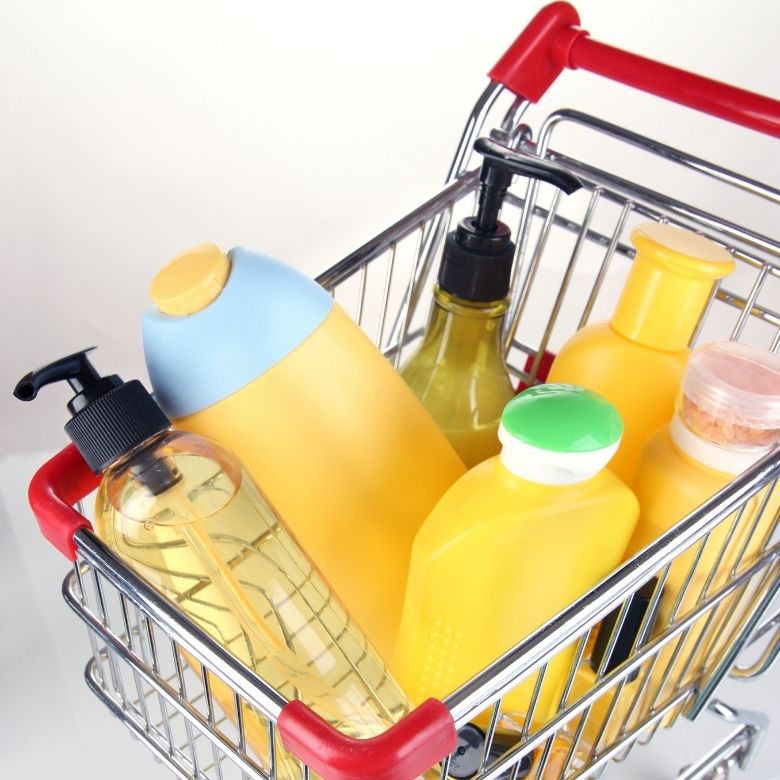Many cosmetic products nowadays are marked as “SLS- and SLES-free”. What are these substances and are the recommendations not to use them justified? To answer this question, it is best to take a peek into the world of science and research studies. This article explains what these mysterious acronyms mean and what effects these substances have. It also debunks the most common myths about them.

SLES AND SLS – what do they mean?
Let’s start at the beginning. What are these substances? SLS (Sodium Lauryl Sulfate) and SLES (Sodium Lauryl Ether Sulfate) are clear, light yellow, viscous fluids. They are among the most important anionic surfactants, salts of fatty alcohol sulfates.
Similarly to other fatty alcohol sulfates and fatty alcohol ether sulfates, the uses of SLES and SLS are related to their surfactant properties, as their molecules have both a hydrophilic and hydrophobic part.
The ability to modify their properties allows to use these compounds in a range of applications, including those that require high activity (foaming, detergency), stability in a wide pH range, solubility in water or chemical compatibility.
Activity of SLES and SLS
Chemical products containing SLS or SLES demonstrate very good foaming properties. Therefore, they react easily with impurities, including oily stains and discolourations, and eliminate them effectively.
SLS and SLES also have excellent washing and emulsifying properties. Their presence increases resistance to hard water. They can also increase the viscosity of a washing formulation in the presence of additional non-ionic or amphoteric surfactants, as well as electrolytes.
SLES and SLS quickly undergo complete biodegradation, so their use also has an ecological aspect.
Uses of SLES and SLS
Both SLES and SLS can be found in most cosmetic washing products, but also in cleaning agents. They are most often used in shampoos, shower gels and liquid soaps. They are also commonly found in pet washing products. We may find them in cleaning agents used daily in our households, e.g. some laundry detergents.
These substances are also used in the textile industry. They demonstrate a whitening effect that eliminates even very difficult stains.
Most agents used in industrial cleaning, including products for the cleaning of machines and motors, include these chemicals. Intensive foaming and the properties that support the removal of persistent dirt, make cleaning of any surface possible, even if it is covered in oil or other thick and oily substances.
Other uses include those associated with the building industry, the chemical industry, and the production of extinguishing agents.

Risks for human health
So, what about their harmful activity? Why are they used on such a broad scale, if many sources warn against their adverse effects? We will explain that shortly. Many myths regarding these substances have occurred recently. Let’s debunk some of them.
Safety of using SLS and SLES
The presence of SLS or SLES in various formulations has no adverse effect on the human body. The safety of products containing these substances is often confirmed by studies, sometimes mentioned on labels. Cosmetic Ingredient Review (CIR) confirmed the safety of using these substances in cosmetic products.
Are they carcinogenic and toxic?
Many organisations, such as World Health Organisation (WHO) and the International Agency for Research on Cancer (IARC) register and classify chemical compounds demonstrating carcinogenic or toxic effects. Importantly, neither SLES nor SLS are listed in any of those registers. Summing up, these substances are not toxic.
Do they irritate the skin?
Observable side effects may occur as a result of direct and prolonged contact with these substances in their pure form, to which we mostly do not have access in daily life. Therefore, in cosmetic products they are used in lower concentrations and are combined with various other surfactants that also eliminate any potential adverse effects and ensure their safe use of the final product. Products with SLES, as well as those without SLES, may demonstrate irritant or allergising properties. A proper combination of the ingredients in a formulation contributes to the development of truly delicate preparations, despite the SLES content. Such products can still be found on shop shelves, despite the generally negative approach to this ingredient. Why? Probably because no equally economical and effective substitute has been found so far. The majority of washing products that can be found in shops contain this ingredient. Which is fine, as the sole fact that the formulation contains SLES is of little consequence. Depending on the quantity of the substance used and the ingredients it has been combined with, the irritant potential of the end product may vary. Reading the list of ingredients alone does not provide such information. Also, assessing the product based only on the analysis of individual ingredients is misleading, as anyone studying surface-active agents in detail will know that alone they act differently than in combination with other substances.

To buy or not to buy products containing SLS or SLES?
To sum up the information in this article, products containing SLS or SLES are safe to use. The right composition and technology of manufacture provides them with many positive and useful properties. However, it is important to choose trusted products of high quality and use them as intended. This will ensure the effectiveness and safety of these formulations.
The PCC Group offers SLES, available under the name of SULFOROKAnol L270/1 and SLS, available under the name of ROSULfan L. Both products generate very stable foam and are completely biodegradable. They also meet the criteria of directives applicable to cosmetics and detergents.
However, before purchase we should define our expectations concerning a given product, or even contact a specialist. With cosmetics, it is worth seeking advice as to what will be best for one’s skin, as it may react to certain chemical compounds in different ways, including an allergic reaction.
A broad range of high-quality surfactants is available at the PCC Group Product Portal. We invite you to examine our Product Catalogue!
